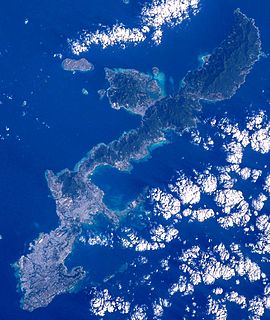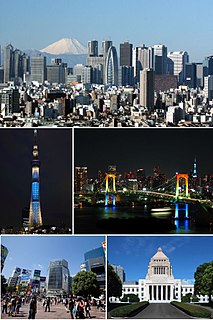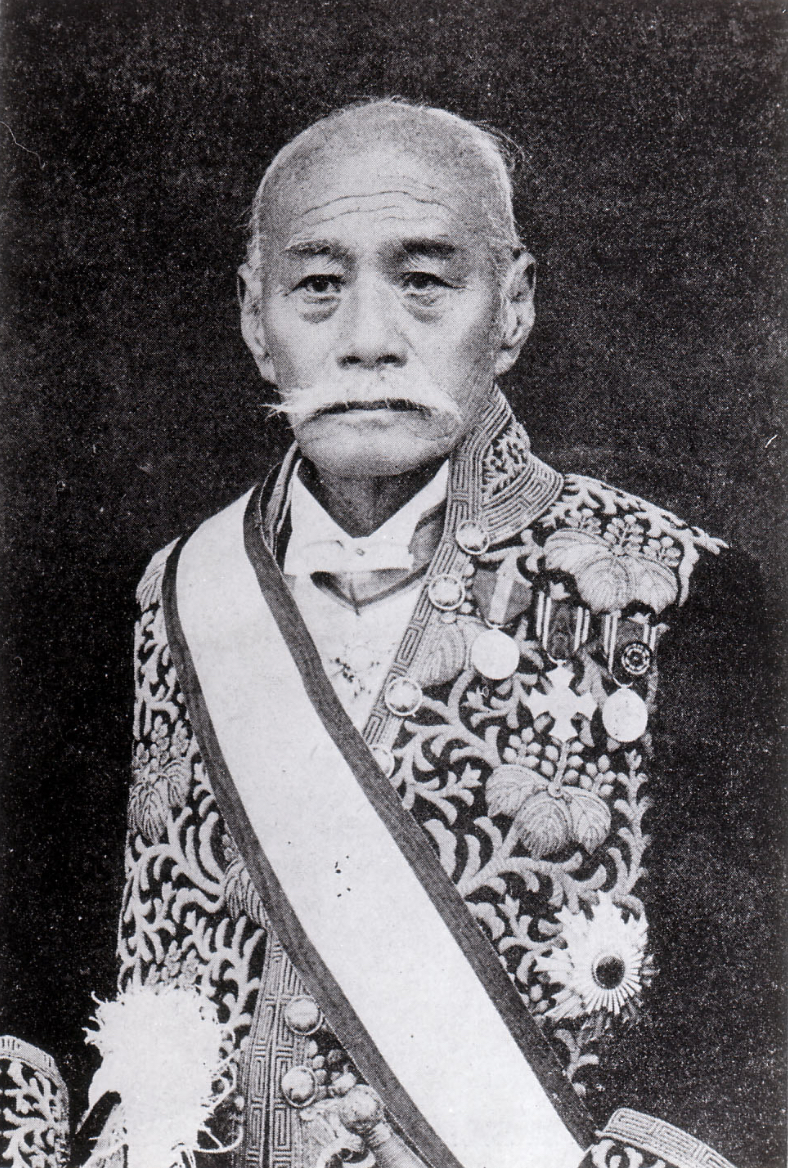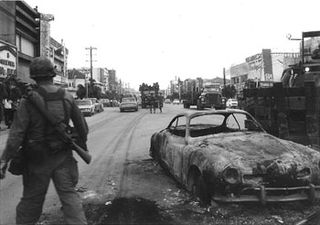Zenchū Nakahara(仲原善忠Nakahara Zenchū, 15 July 1890 – 25 November 1964) was a Japanese scholar, known particularly for his work on the Omoro sōshi , a written collection of songs and poems which constitutes an oral history of Okinawa and the Ryūkyū Kingdom.

Japanese people are a nation and an ethnic group that is native to Japan and makes up 98.5% of the total population of the country. Worldwide, approximately 129 million people are of Japanese descent; of these, approximately 125 million are residents of Japan. People of Japanese ancestry who live outside Japan are referred to as nikkeijin(日系人), the Japanese diaspora. The term ethnic Japanese is often used to refer to Japanese people, as well as to more specific ethnic groups in some contexts, such as Yamato people and Ryukyuan people. Japanese are one of the largest ethnic groups in the world.

Okinawa Island is the largest of the Okinawa Islands and the Ryukyu (Nansei) Islands of Japan. The island is approximately 70 miles (110 km) long and an average 7 miles (11 km) wide, and has an area of 1,206.98 square kilometers (466.02 sq mi). It is roughly 640 kilometres (400 mi) south of the rest of Japan and 500 km (300 mi) north of Taiwan. The Greater Naha area, home to the prefectural seat of Okinawa Prefecture on the southwestern part of Okinawa Island, has roughly 800,000 of the island's 1.423 million residents, while the city itself is home to about 320,000.
Nakahara was born in Nakazato magiri , on Kumejima. He attended the Okinawa Normal School, and Hiroshima Normal High School, before going on to teach at various schools in Tokyo, Shizuoka prefecture, and elsewhere. [1]

Tokyo, officially Tokyo Metropolis, one of the 47 prefectures of Japan, has served as the Japanese capital since 1869. As of 2014, the Greater Tokyo Area ranked as the most populous metropolitan area in the world. The urban area houses the seat of the Emperor of Japan, of the Japanese government and of the National Diet. Tokyo forms part of the Kantō region on the southeastern side of Japan's main island, Honshu, and includes the Izu Islands and Ogasawara Islands. Tokyo was formerly named Edo when Shōgun Tokugawa Ieyasu made the city his headquarters in 1603. It became the capital after Emperor Meiji moved his seat to the city from Kyoto in 1868; at that time Edo was renamed Tokyo. Tokyo Metropolis formed in 1943 from the merger of the former Tokyo Prefecture and the city of Tokyo. Tokyo is often referred to as a city but is officially known and governed as a "metropolitan prefecture", which differs from and combines elements of a city and a prefecture, a characteristic unique to Tokyo.
He first began research into Okinawan history around the age of 50. After the end of World War II, he researched the native Ryukyuan religion, and produced a paper which drew great praise from Yanagita Kunio, widely regarded today as the father of Japanese ethnology. He would go on to produce a number of papers on topics relating to Okinawan history, omoro, and ethnology, as well as a middle school textbook entitled History of Ryukyu(琉球の歴史ryūkyū no rekishi). [1]

World War II, also known as the Second World War, was a global war that lasted from 1939 to 1945. The vast majority of the world's countries—including all the great powers—eventually formed two opposing military alliances: the Allies and the Axis. A state of total war emerged, directly involving more than 100 million people from over 30 countries. The major participants threw their entire economic, industrial, and scientific capabilities behind the war effort, blurring the distinction between civilian and military resources. World War II was the deadliest conflict in human history, marked by 50 to 85 million fatalities, most of whom were civilians in the Soviet Union and China. It included massacres, the genocide of the Holocaust, strategic bombing, premeditated death from starvation and disease, and the only use of nuclear weapons in war.

Ethnology is the branch of anthropology that compares and analyzes the characteristics of different peoples and the relationships between them.
A middle school is an educational stage which exists in some countries, providing education between primary school and secondary school. The concept, regulation and classification of middle schools, as well as the ages covered, vary between, and sometimes within, countries.












